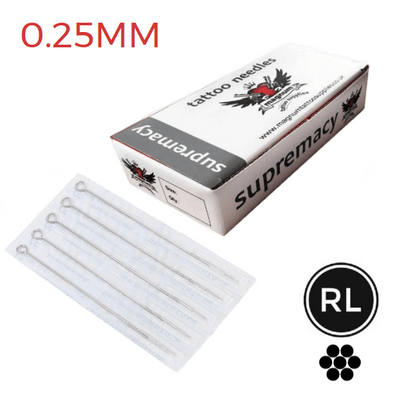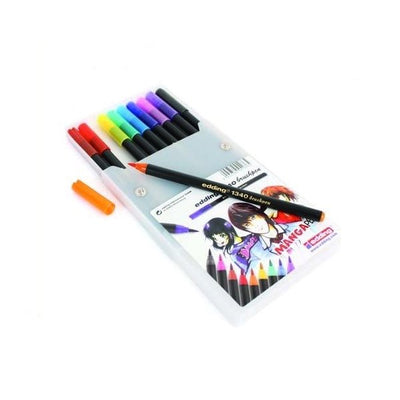Microrealism tattoos have gained popularity in recent years for their intricate detail and lifelike portrayal of images on a miniature scale. However, as with any tattoo style, questions arise about their longevity and how well they hold up over time. Now, a decade after the microrealism trend took off, it's time to explore how these tiny masterpieces have fared.

What are micro realism tattoos?
Microrealism tattoos are a style of tattooing that aims to replicate real-life images with intricate detail on a very small scale. Unlike traditional realism tattoos, which may cover larger areas of the body, micro realism tattoos focus on capturing intricate details such as facial features, textures, and shading in a compact design.
Artists skilled in this technique use fine needles and meticulous shading to create hyper-realistic depictions of subjects ranging from portraits to nature scenes.
These tattoos require a high level of precision and expertise due to the limited space available for intricate detailing, resulting in stunningly lifelike miniature artworks adorning the skin.
How does microrealism differ from other tattoo styles?
Microrealism, also known as micro-realism or micro-tattooing, is a tattooing style that focuses on creating highly detailed and realistic images on a very small scale. Here are some key ways in which micro realism differs from other tattoo styles:
Scale
Microrealism tattoos are typically very small, often incorporating intricate details and shading into a tiny space. This requires a high level of skill and precision from the tattoo artist to create realistic images on such a small canvas.
In contrast, other tattoo styles may involve larger designs with more room for detail and shading.
Detail
Microrealism tattoos are characterised by their attention to detail. Tattoo artists who specialise in micro realism often use single-needle techniques and fine lines to create intricate designs that mimic the look of photographs or realistic artwork. Other tattoo styles may prioritise bold lines and colour saturation over fine details.
Realism
As the name suggests, microrealism tattoos aim to achieve a high level of realism, often resembling miniature photographs or lifelike portraits. Artists may use techniques such as shading, stippling, and colour blending to create depth and dimension in their designs.
In contrast, other tattoo styles may prioritise stylised or abstract representations over realistic imagery.
Subject matter
Microrealism tattoos can feature a wide range of subjects, including portraits, animals, landscapes, and objects. However, due to the small scale of these tattoos, artists may need to simplify complex designs or focus on specific details to make them legible at a small size. Other tattoo styles may offer more scale and subject matter flexibility, allowing for larger and more elaborate designs.

Does microrealism last for 10 years?
Like any tattoo, the longevity of a microrealism tattoo depends on the tattoo ink quality, the skill of the artist, the location of the tattoo on the body, and how well it's cared for.
Generally, microrealism tattoos can last for 10 years or longer with proper tattoo aftercare. However, due to the fine details and delicate nature of microrealism designs, they may be more prone to fading over time than larger, bolder tattoos. Touch-ups may be needed to maintain the sharpness of the details and keep the tattoo looking its best as it ages.
To aid in the protection and preservation of your microrealism tattoo, consider using Dermalize Pro Total Black Sun Block. This innovative product provides a barrier against harmful UV rays while promoting optimal healing and color retention. Additionally, protecting the tattoo from prolonged sun exposure and moisturising the skin regularly can help extend its lifespan.
Additionally, protecting the tattoo from prolonged sun exposure and moisturising the skin regularly can help extend its lifespan.
Are microrealism tattoos painful?
Since microrealism tattoos often involve intricate details and shading, the artist may need to use a single needle or fine line work, which can cause more discomfort than thicker lines or solid-fill tattoos. Additionally, areas of the body with thinner skin or closer to bone may be more sensitive to tattooing.
However, some people find that the pain of getting a microrealism tattoo is manageable, especially if they take breaks during longer sessions or use numbing creams. Ultimately, the pain level experienced during a microrealism tattoo session varies from person to person.
Final thoughts
A decade after their prominence, microrealism tattoos continue to captivate and inspire. While they may not be immune to the effects of time, with proper care and attention, these miniature masterpieces can remain vibrant and beautiful for longer years. As the microrealism trend evolves, tattoo enthusiasts can look forward to innovations and techniques that push the boundaries of this captivating art form.



























































 Studio supplies
Studio supplies












 Power & batteries
Power & batteries








 Aftercare
Aftercare





















 Apprentice
Apprentice


 Piercing & jewellery
Piercing & jewellery







 PMU supplies
PMU supplies




 New arrivals
New arrivals
 Gift vouchers
Gift vouchers
 Shop all
Shop all
















































